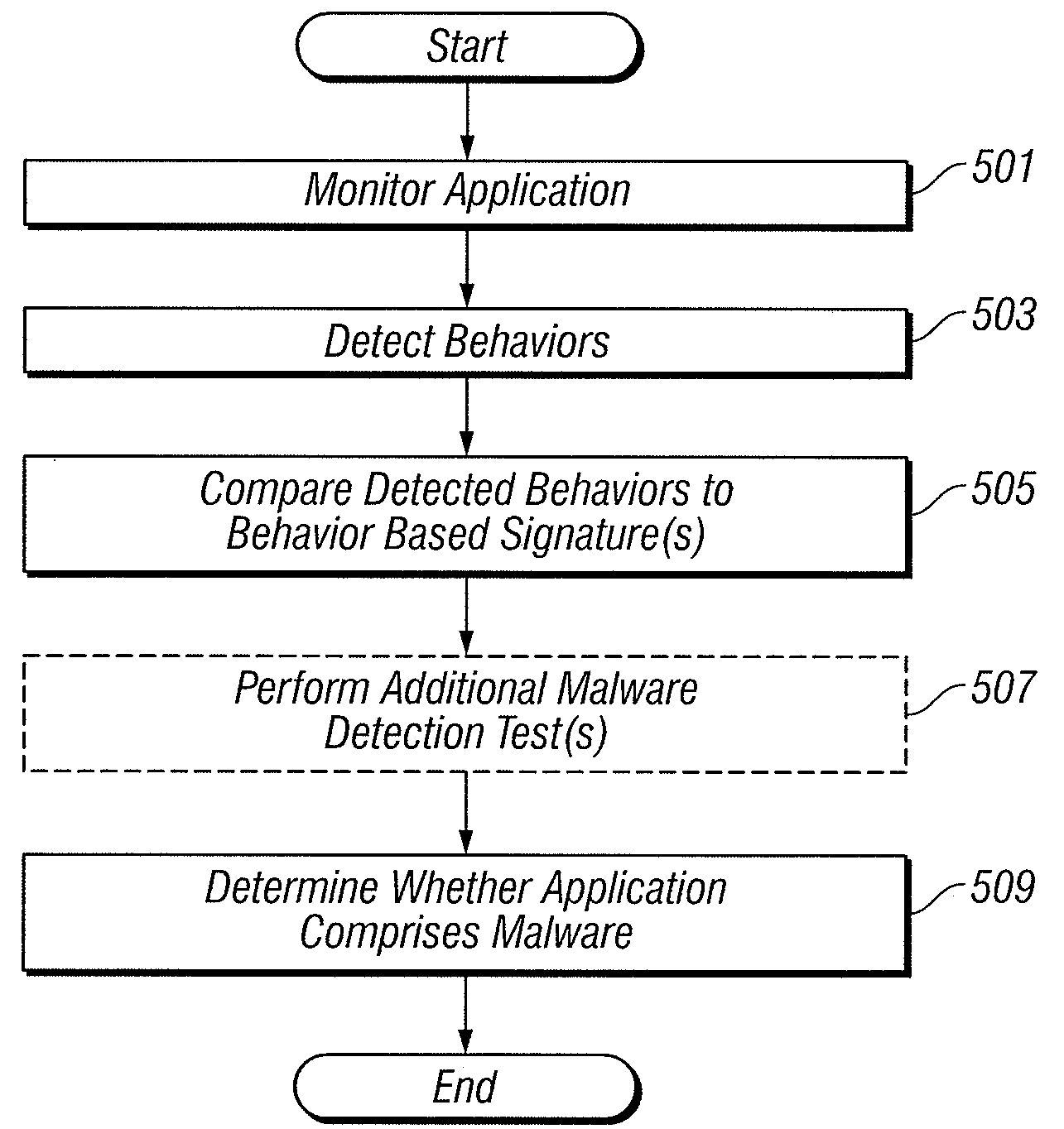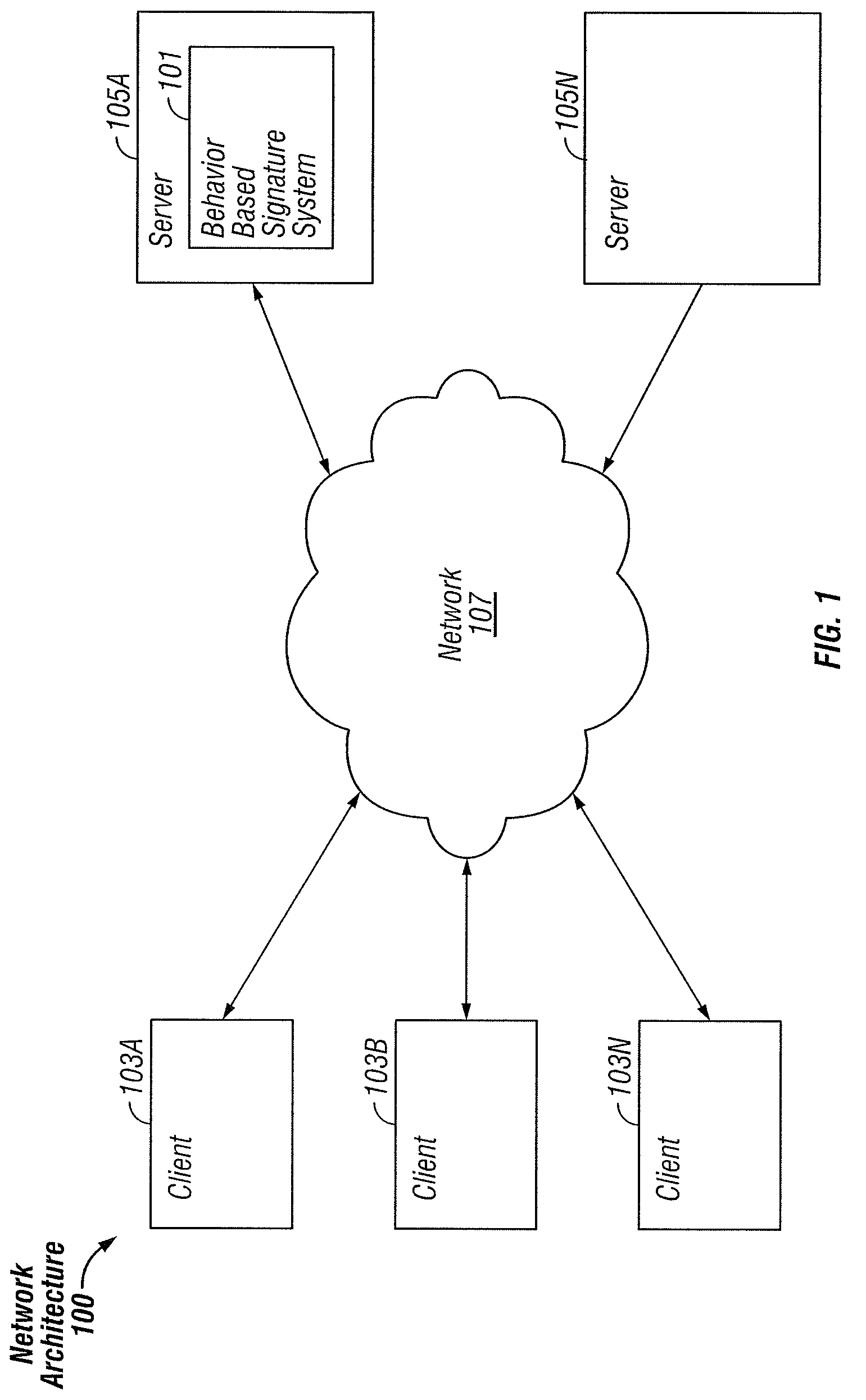Behavior based signatures
a behavior-based signature and signature technology, applied in the field of computer security, can solve the problems of large number of ineffective malware signatures in use, and easy circumvention of signature-based detection by changing conten
- Summary
- Abstract
- Description
- Claims
- Application Information
AI Technical Summary
Benefits of technology
Problems solved by technology
Method used
Image
Examples
Embodiment Construction
[0015]FIG. 1 is a block diagram illustrating an exemplary network architecture 100 in which a behavior based signature system 101 can be implemented. The illustrated network architecture 100 comprises multiple clients 103A, 103B and 103N, as well as multiple servers 105A and 105N. In FIG. 1, the behavior based signature system 101 is illustrated as residing on server 105A. It is to be understood that this is an example only, and in various embodiments this system 101 can be instantiated on a client 103, a server 105 or distributed between multiple clients 103 and / or servers 105.
[0016]Clients 103 and servers 105 can be implemented using computer systems 210 such as the one illustrated in FIG. 2 and described below. The clients 103 and servers 105 are communicatively coupled to a network 107, for example via a network interface 248 or modem 247 as described below in conjunction with FIG. 2. Clients 103 are able to access applicants and / or data on servers 105 using, for example, a web ...
PUM
 Login to View More
Login to View More Abstract
Description
Claims
Application Information
 Login to View More
Login to View More - R&D
- Intellectual Property
- Life Sciences
- Materials
- Tech Scout
- Unparalleled Data Quality
- Higher Quality Content
- 60% Fewer Hallucinations
Browse by: Latest US Patents, China's latest patents, Technical Efficacy Thesaurus, Application Domain, Technology Topic, Popular Technical Reports.
© 2025 PatSnap. All rights reserved.Legal|Privacy policy|Modern Slavery Act Transparency Statement|Sitemap|About US| Contact US: help@patsnap.com



